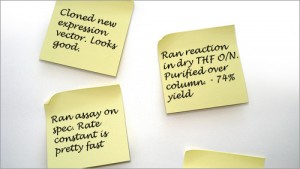 An “Elevator Pitch” – the idea that you should be able to explain your idea, project or lab within a 20-30 second elevator ride – is like explaining your project in a Tweet. You’ve got to trim the fat and get to the point, or else you just get cut off. Never has the art of brevity been more important than in today’s society, where people face constant information and sensory overload. In every interaction, people are constantly forced to make a quick judgment call on whether what they’re hearing is worth their time.
An “Elevator Pitch” – the idea that you should be able to explain your idea, project or lab within a 20-30 second elevator ride – is like explaining your project in a Tweet. You’ve got to trim the fat and get to the point, or else you just get cut off. Never has the art of brevity been more important than in today’s society, where people face constant information and sensory overload. In every interaction, people are constantly forced to make a quick judgment call on whether what they’re hearing is worth their time.
Despite understanding the concept of the elevator pitch, it can often be very difficult to craft, especially when you’re working on a very specific problem that needs a few minutes of background to be put in context.
Or so you think….








